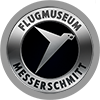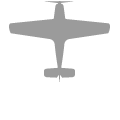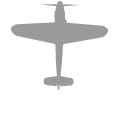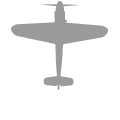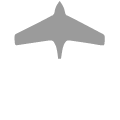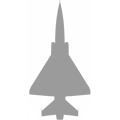The ‘Challenge International de Tourisme’ touring aircraft contests that took place in Europe in the 1920s and 30s were a technical driving force for the development of sport and touring aircraft. Willy Messerschmitt, as chairman and managing director of Bayerische Flugzeugwerke (BFW) in Augsburg – the company changed its name to Messerschmitt AG in 1938 – was involved in the contests on a number of occasions, with his M 23s winning the events in both 1929 and 1930.
His M 29 design for the 1932 contest again included completely new innovations in the form of landing flaps and a single-strut landing gear. After further amendments and improvements, these features were then also incorporated into the design of the Bf 108 for the 1934 contest. This four-seater touring aircraft, which performed its first flight in Augsburg on 13 June 1934 and which would later rise to fame as the Me 108 ‘Taifun’ (the German word for typhoon), is regarded as the ideal design even today. In his design, Willy Messerschmitt included all the technical innovations that were possible at that time – the all-metal monocoque construction that he had developed further for large-scale production, the retractable landing gear that was still a rarity in those days, automatic slats, landing flaps and the retrofittable variable-pitch propeller. All together, these features ensured the best possible take-off, flight and landing characteristics (landing speed: 85 km/h).
The prototypes were fitted with a Hirth HM 8 engine (240 HP). This was subsequently replaced by the Argus As 10 C V8 engine (240 HP) in the Me 108 B series from 1936 onwards. This air-cooled engine had a better power-to-weight ratio and its fuel consumption was more economical.
Although the Me 108s did not win the 1934 Challenge, they were the fastest aircraft in the competition, reaching speeds of 290 km/h. The Me 108s were also given the highest technical scores, beating both their German and international rivals (including Klemm and Fieseler).
When the first series-manufactured aircraft became available on the civil-aviation market (the majority went to the German air force (Luftwaffe) for use as liaison and training aircraft), the ‘Taifun’ received international acclaim. Elly Beinhorn, who gave the aircraft its name and flew it on many long-distance flights, said that she was able to “fly the aircraft with her little finger”. In 1937, Charles Lindbergh wrote, “The 108 is by far the best aircraft of its type that I have ever flown. Its control features are outstanding – and the stick and rudder are very light...”
The aircraft was initially built at the Augsburg site, with production moving to the Messerschmitt site in Regensburg in 1938 and then, in 1942, to the French partner organisation SNCAN in Les Mureaux near Paris. Production of the aircraft designated Nord 1001 and Nord 1002 then continued at this site for the French air force into the 1950s, with Renault engines now being fitted. In total, more than 1,000 Me 108s, Nord 1000s, Nord 1001s and Nord 1002s were built. Exported to 15 different countries, they were flown on four continents.



